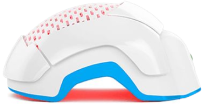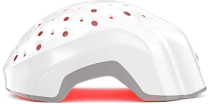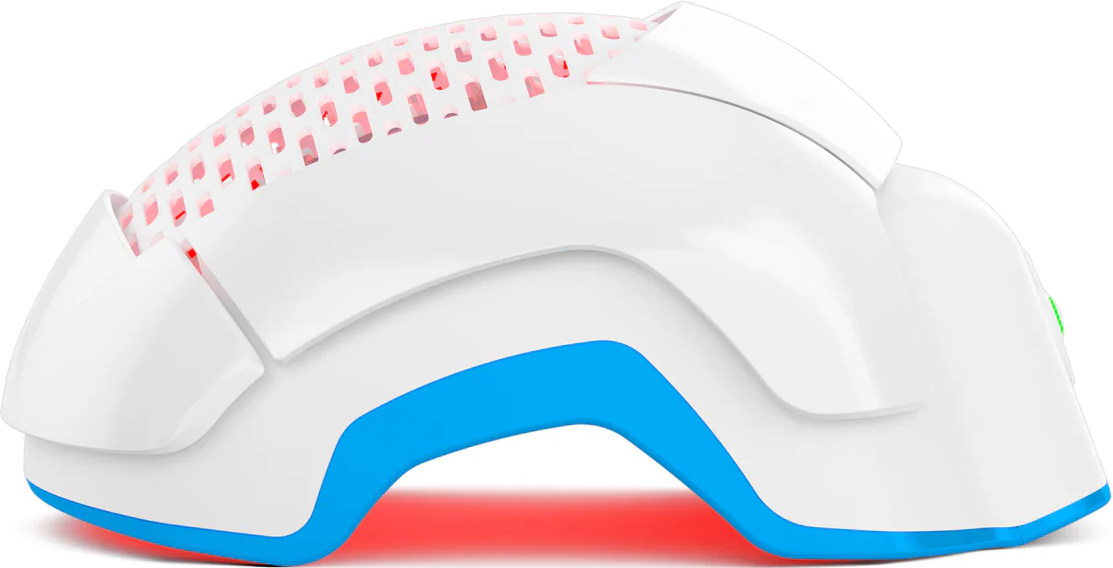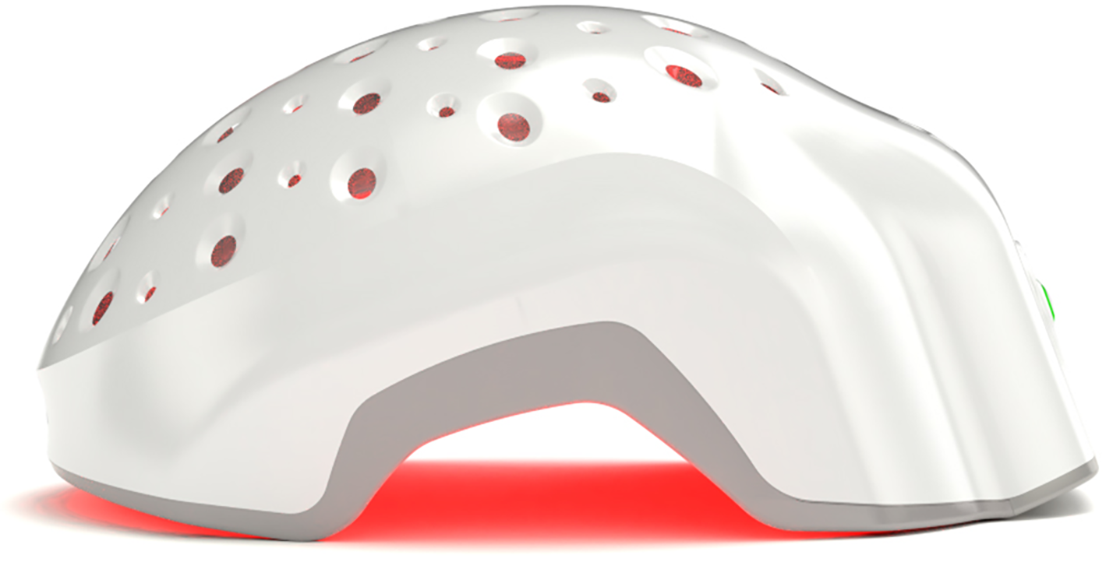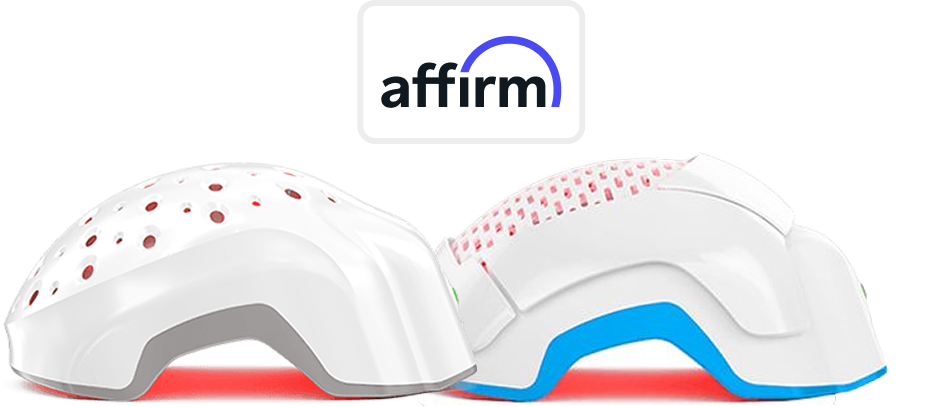Have you ever looked in the mirror and noticed short hairs sticking up all over your head? Are you struggling to figure out if the short hair on your head is newly growing or breaking? It can be tricky to tell the difference sometimes!
Understanding the difference between new hair growth and hair breakage is crucial for maintaining healthy, vibrant hair. Whether you're trying to grow out your hair or simply keep it in the best condition possible, being able to distinguish between these two can help you tailor your hair care routine effectively. Misinterpreting breakage as new growth or vice versa can lead to improper treatments, causing further hair damage or slowing down your progress.
To quickly determine if those short baby hairs are new growth or breakage, look at their texture and location. Also, you can examine the hair length and hair ends to spot the difference between them. In this blog, we'll guide you through the key signs of new hair growth and how to differentiate it from breakage. We'll also provide tips on monitoring hair shedding and the importance of comparing before and after photos. By the end, you'll have a comprehensive understanding of new hair growth vs breakage.
How to Tell If Its Breakage or New Growth?
It can be tricky to tell if the short strands you see are from hair breakage or new growth. Both can appear similar, but there are key differences to look for. To identify new growth, check the roots. New hair often feels soft and will have a tapered tip, which means it's freshly growing. On the other hand, hair breakage usually happens in the middle of the strand and feels rough. Broken hair may also look frizzy or uneven, especially in areas where it's weak or damaged.
Below, we have explained each key sign to identify new hair growth and breakage.
Also Read: What Does Crown Hair Breakage Look Like?
How to Identify New Hair Growth?

New hair growth refers to the fresh, emerging baby hairs that signify your hair is growing actively. Identifying new hair growth can be tricky since you can't feel the hair growth, but it is essential for tracking your hair health and progress.
Texture and Color
New hair growth often has a different texture and color compared to the rest of your hair. Typically, new baby hair is finer and softer to the touch because it hasn't yet been exposed to environmental damage or styling products. The color might also appear slightly different as it hasn't yet been affected by sunlight or chemicals.
Hair Length
One way to tell if it’s new hair growth is by looking at the length of the hair. New hair usually looks shorter than the rest of your hair and may stick up or feel soft and fine. It often appears around your hairline, crown, or temples. If you notice short strands that are growing longer over time, it’s likely new hair coming in, not breakage.
Monitor Hair Shedding
Monitoring hair shedding can also help identify new growth. When you see less hair in your brush or shower drain, it often means your hair is breaking less and growing more. Pay attention to these patterns as reduced shedding can signal healthy new hair development.
Compare Before and After Photos
Taking regular before and after photos is an effective way to track new hair growth. By comparing these photos over time, you can visibly see the changes in hair density, length, and overall health, making it easier to distinguish new growth from breakage.
How to Identify Hair Breakage?
Hair breakage occurs when strands of hair become weak and snap off, leading to split ends, frizz, and uneven hair length. It's often caused by physical stress, chemical damage, or environmental factors. Recognizing hair breakage from new hair growth is vital to preventing damaged hair and maintaining healthy hair.
Examine the Hair Ends
To identify hair breakage from new hair growth, examine the ends of your hair. If the ends are split, frayed, or uneven, it indicates breakage. New baby hair growth, on the other hand, will have a tapered, smooth end. By closely looking at the ends, you can easily tell if your hair is breaking or new growth.
Look for Uneven Length
Hair breakage often results in uneven hair length. If you notice shorter, jagged strands within your hair that don't match the general length of your hair, it's likely due to breakage. Unlike new growth, which starts at the scalp, breakage occurs along the hair shaft, leading to these irregular lengths.
Monitor Hair Volume
Monitoring your hair volume can also help identify breakage. A sudden decrease in hair volume or the appearance of thinner areas can indicate significant breakage. Healthy hair retains a consistent volume, while broken hair may appear flat and lack fullness due to the loss of strands at different lengths.
How Can You Avoid Hair Breakage?
To avoid hair breakage, minimize the use of heat styling tools. Excessive heat can weaken the hair shaft, leading to breakage. Opt for air-drying your hair or using heat protectants if you must use styling tools. Protecting your hair during sleep is another crucial step. Use a silk or satin pillowcase to reduce friction, and consider wearing a silk or satin bonnet to protect your hair from tangling and breaking. Be careful what you use to clip or tie up your hair, and avoid stressing strands by tying hair in the same position every day. Hair is especially fragile when it’s wet, so take precautions not to tug, pull, or brush too aggressively.
These simple changes can significantly reduce hair breakage and keep your hair looking its best.
New Hair Growth vs Breakage: Side-by-Side Comparison
Let’s look at the side-by-side comparison of new hair growth vs breakage so you can understand the differences between them more clearly.
| Point of Difference | New Hair Growth | Breakage |
|
Texture and Color |
New hair feels finer, softer, and often different in color. |
On the other hand, broken hairs are rough and frayed and can appear more brittle and less glossy. |
| Hair Length | Shorter, emerging uniformly across the scalp | Uneven lengths, often in the middle of strands |
| Location | Starts at the scalp | Unlike new hair growth, breakage occurs along the hair shaft. |
| Volume | Gradual increase in overall volume | Sudden decrease in volume, thinner areas |
| Ends | Healthy, intact, tapered or blunt if recently cut | Split, frayed, may look pale |
Conclusion
Understanding whether you’re experiencing new hair growth or breakage is essential for maintaining healthy hair. By examining the texture, color, hair length, volume, and ends, you can identify whether your hair concerns stem from hair breakage vs new growth. Recognizing these signs helps tailor your hair care routine, ensuring that you address the right issues for healthier hair.
If you're questioning, "is my hair breaking or is it new growth?” knowing the differences can significantly impact your hair health strategy. For those looking for effective hair loss treatment, consider trying Theradome. The Theradome laser helmet offers a clinically proven solution to stimulate new hair growth and combat hair breakage. Theradome works for hair loss by stimulating the hair growth cycle, encouraging follicles to move from the resting phase to the active growth phase.


